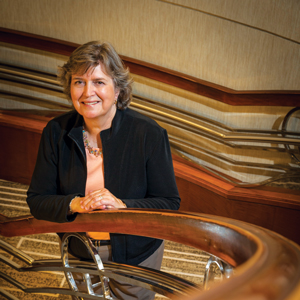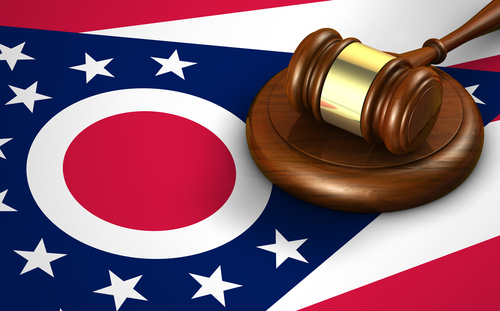Some states see increase in bar pass rates, while others witness declines

Erica Moeser. ABA Journal file photo by Tony Avelar.
Updated: As the July 2016 bar results are released, it appears that nationally, there’s a slight uptick with scores, says Erica Moeser, president of the National Conference of Bar Examiners.
“The big picture item is that we have looked for scores to continue to drop, and they didn’t,” she told the ABA Journal.
Scores did drop in California (PDF) from 46.6 percent in July 2015 to 43 percent in July 2016. That’s attributable to a passing percentage reduction among first-time test takers who graduated from California law schools with ABA accreditation, Moeser says.
“That is the largest group of test-takers, and their performance dropped from 68 percent on the July 2015 bar exam to 62 percent this July,” she said.
New York, which like California has been known for having a hard bar exam, saw a 4 percent pass rate increase (PDF) for July 2016. That’s likely due to New York adopting the Uniform Bar Exam this year, say many law school professors.
New Mexico, which also did its first administration of the UBE in July 2016, didn’t fare as well. Its pass rate was 68 percent, compared to 81 percent in July 2015, the Albuquerque Journal reported in September.
“One theory is that graduates did better on an exam focused on New Mexico law, because that’s what they’re learning in law school. New York results have been improving since it adopted the UBE, but that may be related to the fact that the UBE is easier than the [former] New York bar exam,” says Denise Roy, co-president of the Society of American Law School Teachers’ board of governors. Roy is a professor at Minnesota’s Mitchell Hamline School of Law.
Some thought that this year’s slight increase in the multistate bar exam’s national mean score—from 139.9 to 140.3—might bring better bar passage rates for July 2016 test takers. For the most part that didn’t happen, Derek Muller, a Pepperdine University law professor who writes at Excess of Democracy, noted in a Sept. 20 post.
Looking at National Conference of Bar Examiners data for 2012 and 2015 pass rates, along with 2016 numbers pulled from individual states, Muller found that while July 2016 pass rates slightly improved in Kansas (PDF) and West Virginia, numbers were down in Missouri and Indiana. In Iowa (PDF), he found that the state’s July bar passage rate for 2016 was 71 percent. Comparatively, its July 2012 bar passage rate was 90 percent.
According to Roy, the “volatility and erratic patterns” seen with bar exam results show that the tests should be changed. Her organization believes that bar exams do little to demonstrate that someone is ready to practice law.
“In all cases, the bar exams tests a very narrow set of skills and advantages those who do better on time-pressured and standardized tests relying on memorization,” she says. “The NCBE, which has a virtual monopoly on law licensing tests, has an obligation to investigate tests that better reflect the ability to practice law and thus better protect the public.”
Updated Nov. 30 to include figures that had been checked for accuracy.



